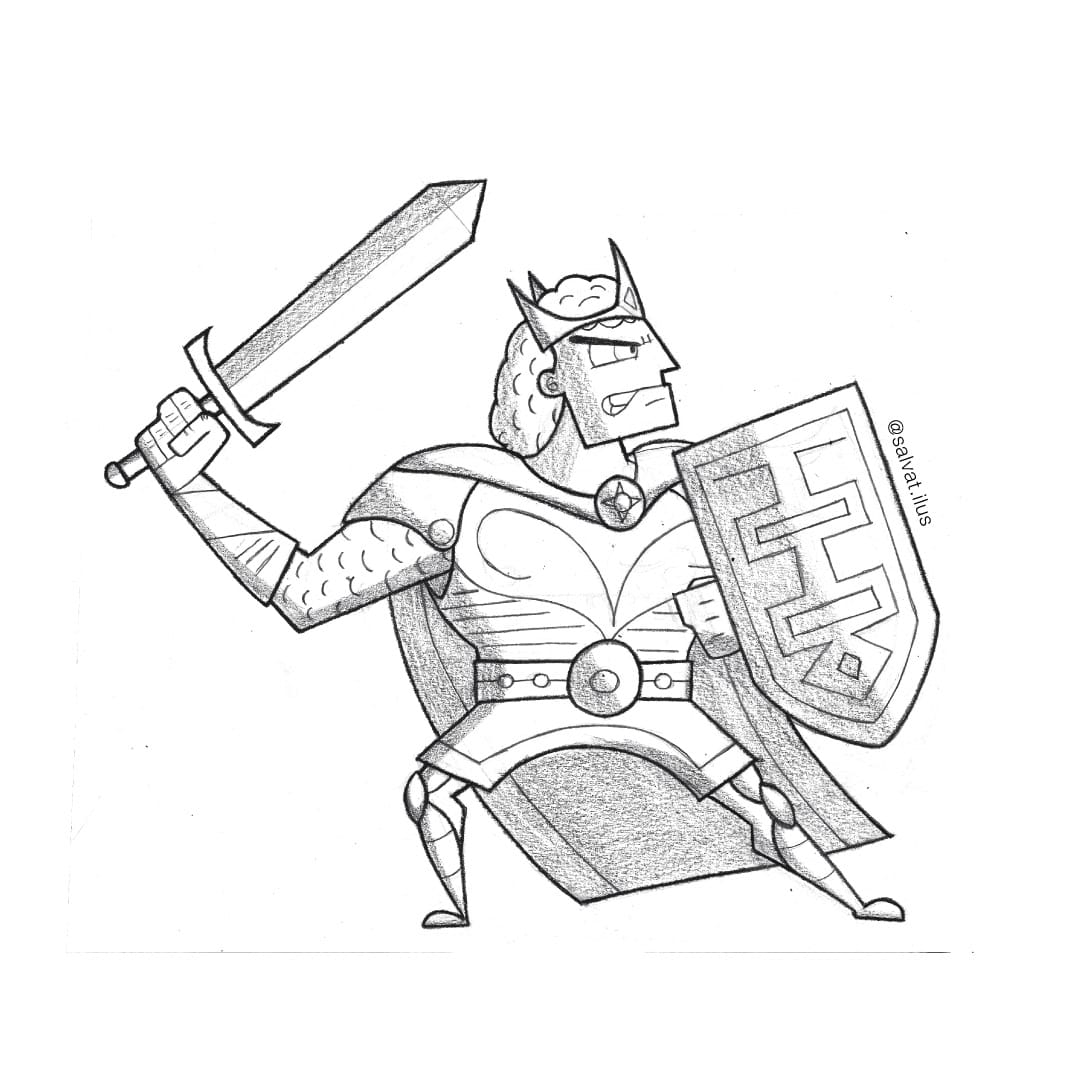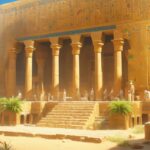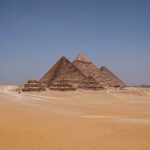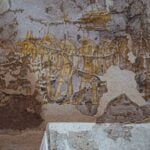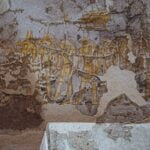Outperforming Your Competitors: Comparing and Contrasting the Epic of Gilgamesh and Enuma Elish
This article delves into two literary titans from ancient Mesopotamia: the Epic of Gilgamesh and the Enuma Elish. While both epics sprung from the fertile grounds of ancient Mesopotamia, their narratives offer contrasting perspectives on mortality, kingship, and the very nature of existence. Examining them side-by-side unveils a complex tapestry of Mesopotamian beliefs about creation, kingship, and humanity’s place within the cosmic order.
Comparison and Contrast of the Epic of Gilgamesh and Enuma Elish
Let’s journey back to ancient Mesopotamia, the “land between rivers,” a cradle of civilization where writing first emerged. Here, amidst the bustling cities and fertile plains, two epic tales took root: the Epic of Gilgamesh and the Enuma Elish. Imagine them as ancient bestsellers, passed down through generations, shaping their worldview much like our favorite books influence us today.
While both stories spring from the same fertile ground, they have distinct flavors. The Epic of Gilgamesh, with roots in Sumerian tales, found new life in Akkadian and Babylonian traditions. It’s a story that resonates with human emotions – think of it as a timeless quest for meaning in the face of death. On the other hand, the Enuma Elish is like a cosmic drama, a Babylonian creation myth that explains the universe’s birth and justifies their rulers’ authority.
Let’s break it down:
The Big Questions
Where did we come from? The Epic of Gilgamesh dives straight into a world where gods and humans coexist, focusing on the natural order of life and death. The Enuma Elish, however, starts from the very beginning, painting a vivid picture of the universe emerging from primordial chaos – a cosmic battle royale led by Marduk against the fearsome Tiamat.
Why do we die? This question haunts Gilgamesh, a king obsessed with cheating death. His journey reminds us that accepting our mortality is part of what makes life meaningful. The Enuma Elish tackles death differently, viewing humans as servants to immortal gods – our place in the grand scheme is defined by our relationship to the divine.
What makes a good king? Gilgamesh grapples with this, learning that true leadership demands both strength and compassion. His transformation from a tyrant to a just ruler reveals ancient ideas of responsibility and balance. Meanwhile, the Enuma Elish uses Marduk’s triumph over chaos to justify the Babylonian kings’ right to rule – their authority mirrors the divine order established at the universe’s creation.
Storytelling Styles
Imagine the Epic of Gilgamesh as a beautifully woven tapestry – full of symbolism, metaphors, and deep dives into the characters’ inner worlds. The Enuma Elish, on the other hand, is like a grand mural, depicting the awesome power of creation and the gods with awe-inspiring detail.
Beyond the Surface
Women of Power: These epics give us a peek into ancient views on gender. The Enuma Elish features Tiamat, a primordial goddess embodying chaos, while Gilgamesh introduces us to Ishtar, a powerful yet complex goddess driven by desire and wrath.
The Human Journey: One of the most captivating aspects of Gilgamesh is the emotional rollercoaster of its hero. We witness his grief, his fear, and his eventual acceptance of life’s limits. It’s a story that still resonates with us today.
Ripples Through Time: Both epics, especially their shared flood narrative, have left their mark on later stories and beliefs. Recognizing these echoes helps us appreciate how ancient Mesopotamian myths continue to shape our understanding of literature and religion.
These ancient stories, though fragmented by time, still offer profound insights into a civilization grappling with timeless questions. They remind us that human experiences, even across millennia, are more connected than we might think.
Beyond the Flood: Unveiling the Deeper Connections Between Gilgamesh, Enuma Elish, and the Bible
We’ve seen how the Epic of Gilgamesh tells a powerful story, but it’s not alone in exploring life’s big questions. The flood narrative, a shared element in both Gilgamesh and the Bible, reveals not only cultural exchange but also distinct perspectives on human fallibility and divine justice. Think of other famous stories – they might touch on similar themes of life, death, and what it means to be human. This is where comparing the Epic of Gilgamesh to other works can really get interesting.
One of the most common comparisons is to the Bible, especially the story of Noah’s Ark. Both involve a huge flood brought on by the gods, wiping out almost everything. But here’s where they differ: The Bible frames it as punishment for humanity’s wickedness, while Gilgamesh focuses more on how unpredictable the gods can be – and how fragile we are in comparison.
But it goes beyond just the flood. The Epic of Atrahasis, another ancient story from Mesopotamia, also features a flood narrative and the idea of a chosen few surviving. And if you think about the Garden of Eden, the themes of temptation and loss echo Gilgamesh’s own encounter with the plant of immortality – that desire for something beyond our reach. Even ancient Egyptian stories have these threads of immortality and journeys to the underworld.
The influence of Gilgamesh on storytelling can’t be overstated. Think of the classic “hero’s journey” – that quest for self-discovery you see in so many books and movies. Gilgamesh’s search for immortality basically wrote the blueprint for that. Then there’s Enkidu, the loyal friend who sticks with Gilgamesh through thick and thin – a classic example of the “faithful companion” archetype. And finally, you see Gilgamesh start out as this arrogant king but gradually change into a wiser, more thoughtful ruler – reflecting a universal experience of losing your innocence and facing the realities of the world.
The thing is, we’re still figuring out just how interconnected these ancient stories really are. There’s ongoing research and debate about influences, interpretations – it’s a fascinating field. So, while we can point to similarities between Gilgamesh and these other works, it’s important to remember that no conclusion is set in stone. The beauty of studying literature is that there’s always something new to uncover!
Is the Epic of Gilgamesh Babylonian?
So, we’ve established that the Epic of Gilgamesh is a pretty big deal, but where exactly did it come from? While most folks link it with the Babylonians, the truth is – it’s complicated. You see, the earliest tales of this legendary king, Gilgamesh, weren’t even told in Babylonian! They were actually part of Sumerian poetry, think way, way back, centuries before the Old Babylonian period even began. It was like their own collection of epic tales, passed down through generations.
These Sumerian stories became the building blocks for what would later become the Epic of Gilgamesh we know today. During the Akkadian Empire, these individual stories were woven together, creating a single, epic narrative. Now, jump ahead to the Old Babylonian period. It’s likely there were several different versions of the epic floating around, each with its own little spin on the story.
Here’s the thing, though. While we know these versions probably existed, actually finding a definitive “Old Babylonian” version has been like searching for a needle in a haystack – tricky, to say the least!
The version we know best, the one that’s been pieced back together the most, is called the “Standard Babylonian” version. It popped up later in the Babylonian period and was discovered in, of all places, the library of the Assyrian king, Ashurbanipal! Talk about a bookworm king! This version is our most complete picture of the epic, told in a smooth, literary style of Akkadian known as Standard Babylonian.
Think of it this way:
Imagine a group of friends telling their favorite campfire stories. Each friend adds their own flair, maybe exaggerates a detail or two. Over time, these stories blend, and a single, epic tale emerges. That’s kind of what happened with the Epic of Gilgamesh!
So, while the most famous version hails from the Babylonian period, the epic’s roots run much deeper, stretching back to ancient Sumerian tales. It’s a story that’s been shaped and reshaped over centuries, reflecting the rich tapestry of Mesopotamian culture – a true testament to the enduring power of storytelling.
From Chaos to Kingship: Exploring Mesopotamian Cosmology Through Gilgamesh and Enuma Elish
Now, let’s dive into these two fascinating relics from ancient Mesopotamia – the Epic of Gilgamesh and the Code of Hammurabi. Imagine a time long before iPhones, cars, or even indoor plumbing – we’re talking about a world where stories were passed down orally and laws were etched into stone tablets.
The Epic of Gilgamesh is like the world’s oldest adventure story. This epic poem tells the tale of King Gilgamesh, a legendary ruler of the city of Uruk. When his best buddy kicks the bucket, Gilgamesh freaks out and goes on a wild goose chase to find the secret to immortality. Along the way, he battles mythical creatures, befriends strange beings, and learns some hard truths about life, death, and the human condition. It’s like the “Lord of the Rings” of its time, full of action, drama, and philosophical musings.
On the other hand, the Code of Hammurabi is like the world’s first law book. This collection of 282 laws, set down by King Hammurabi of Babylon, was all about keeping order in his kingdom. This wasn’t just some random list of rules either. The Code covered everything from business deals gone wrong to personal injuries, laying down the law on what happened if you stole someone’s donkey or accidentally injured a neighbor. And if you thought the punishments today were harsh, the Code of Hammurabi was big on the whole “eye for an eye” thing. Pretty intense, right?
Now, you might be thinking – an epic poem and a law book, what do they have in common? Well, both the Epic of Gilgamesh and the Code of Hammurabi give us these incredible glimpses into the minds of the ancient Mesopotamians. They show us what they valued, what scared them, and how they tried to create order in a chaotic world. It’s like peering through a window into a lost civilization.
Even though they’re thousands of years old, these ancient works still resonate with us today. The Epic of Gilgamesh speaks to our universal fears about death and our longing for something more. And the Code of Hammurabi, though brutal at times, reflects our own desire for justice and fairness.
Thinking about these relics from the past reminds us that even though times change, some things, like our hopes, fears, and the human need for stories and laws, remain remarkably constant.
For an insightful review of the captivating mystery novel, “The Body in the Dales”, be sure to check out the body in the dales book review.
- Unlock Elemental 2 Secrets: Actionable Insights Now - April 2, 2025
- Lot’s Wife’s Name: Unveiling the Mystery of Sodom’s Fall - April 2, 2025
- Photocell Sensors: A Complete Guide for Selection and Implementation - April 2, 2025
